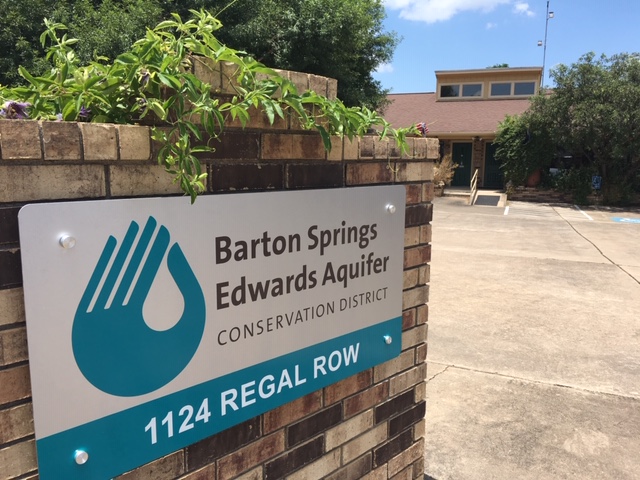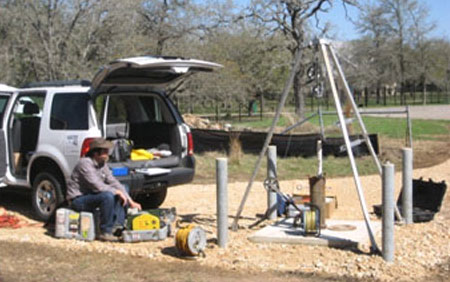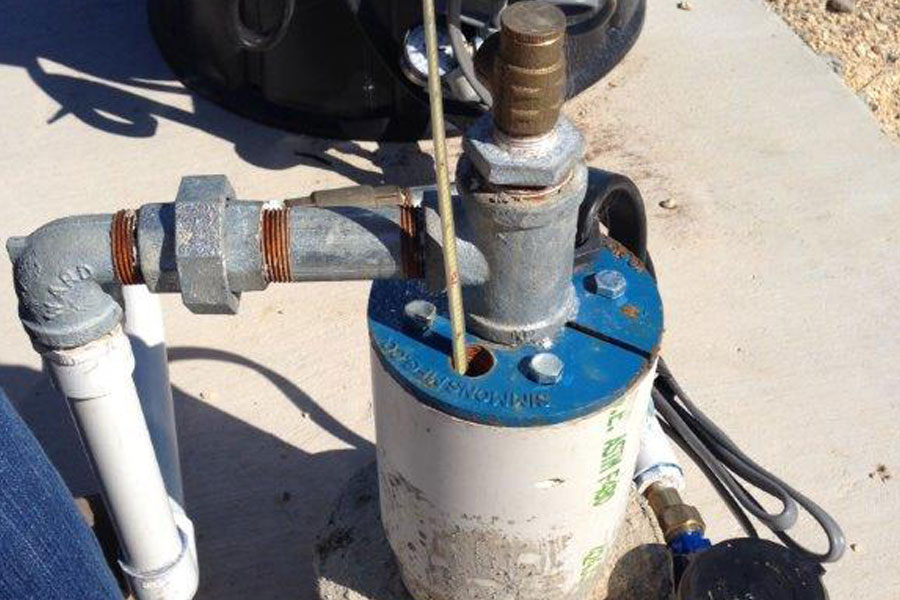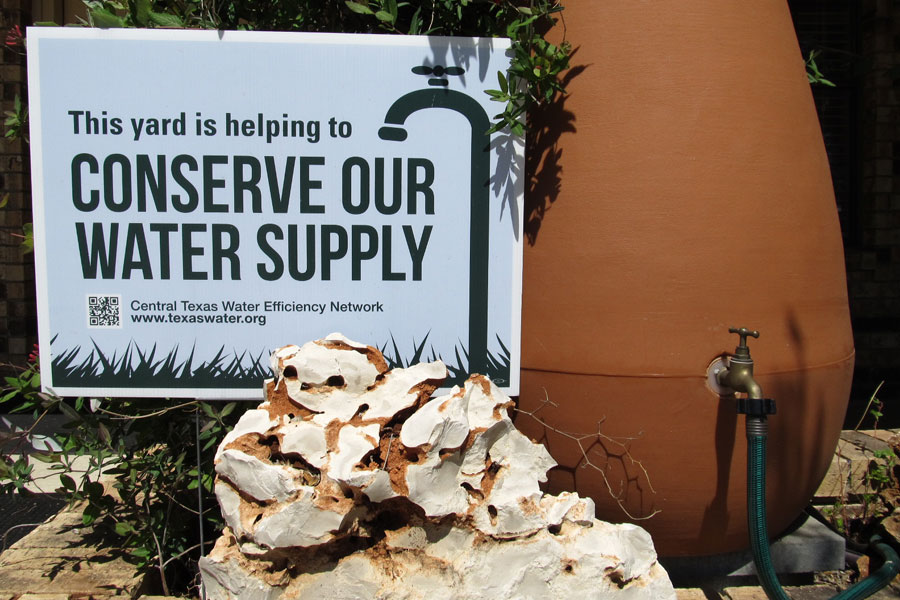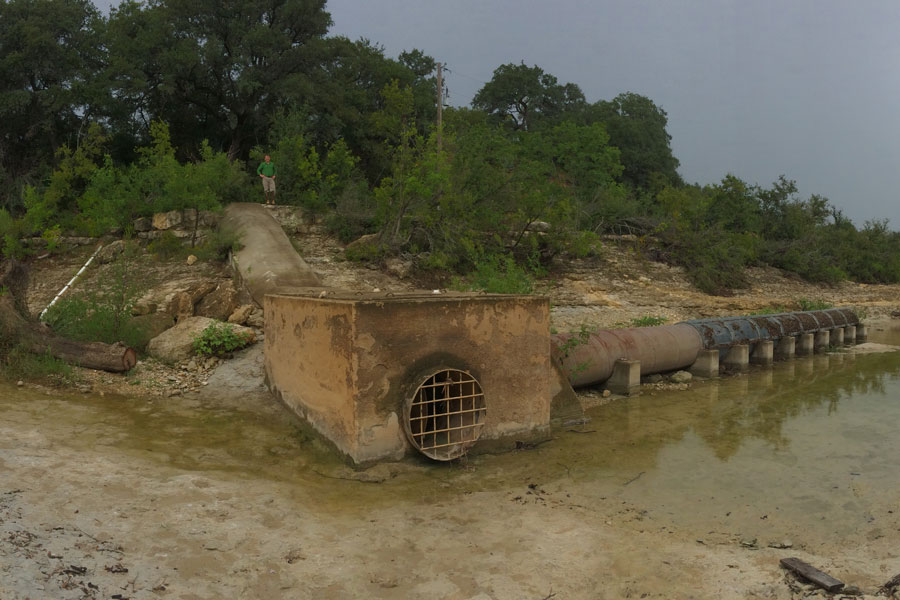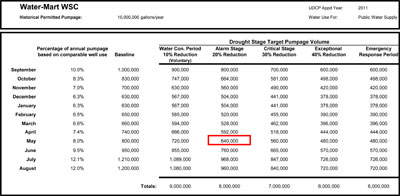Drought Management
Mandatory Curtailments
The District’s drought management program is based on the drought trigger methodology that was adopted and implemented in February of 2006. Upon drought declaration by the Board, each District permittee is required to implement the measures of their adopted User Drought Contingency Plans to obtain the mandatory pumpage reductions. Pumpage reductions are determined by the permit type and the prevailing drought stage as outlined in the following table. If a Permittee excessively and repeatedly violates the pumping curtailments, enforcement procedures can be implemented by the District and penalties may be assessed in accordance with the Enforcement Plan (Adopted 08-12-2021).
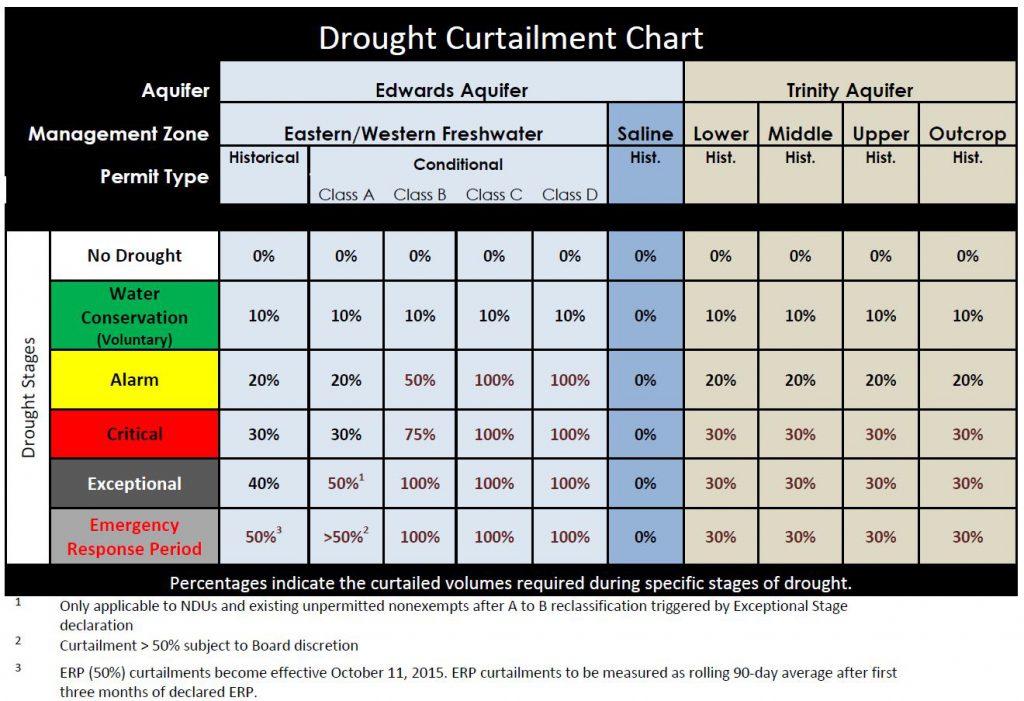
Permittee Drought Compliance
All permittees are required to submit monthly meter readings and those meter reading are used by the District to calculated the actual monthly pumpage volumes for each permittee. The District is then able to analyze whether permittees have met their required curtailments and target production volumes or if they overpumped. The table below indicates the drought stage in effect for that month. You can view and download a drought analysis report for that month by clicking on a link below. Each monthly report is formatted as a pdf spreadsheet that depicts a list of permittees and their associated pumpage and drought compliance for that month.
Drought Pumping Analysis Reports
| 2024 | 2023 | 2022 | 2021 | 2020 | 2019 | 2018 | |
|---|---|---|---|---|---|---|---|
| January | Exceptional Stage IV | Critical Stage III | No Drought | Alarm Stage II | No Drought | No Drought | No Drought |
| February | Critical Stage III | No Drought | Alarm Stage II | No Drought | No Drought | No Drought | |
| March | Critical Stage III | No Drought | Alarm Stage II | No Drought | No Drought | No Drought | |
| April | Critical Stage III | No Drought | Alarm Stage II | No Drought | No Drought | No Drought | |
| May | Critical Stage III | No Drought | Alarm Stage II | No Drought | No Drought | No Drought | |
| June | Critical Stage III | No Drought | Alarm Stage II | No Drought | No Drought | No Drought | |
| July | Critical Stage III | Alarm Stage II | No Drought | No Drought | No Drought | No Drought | |
| August | Critical Stage III | Alarm Stage II | No Drought | No Drought | No Drought | Alarm Stage II | |
| September | Critical Stage III | Alarm Stage II | No Drought | No Drought | No Drought | Alarm Stage II | |
| October | Critical Stage III | Alarm Stage II | No Drought | No Drought | No Drought | No Drought | |
| November | Critical Stage III | Critical Stage III | No Drought | Alarm Stage II | No Drought | No Drought | |
| December | Critical Stage III | Critical Stage III | No Drought | Alarm Stage II | No Drought | No Drought |
Drought Planning
Pumpage Charts
The monthly pumpage chart is the primary component of your User Drought Contingency Plans (UDCP) that should be used for managing your pumpage while in drought. This chart tells you everything you need to know about how much pumpage is allowed for each month and for each drought stage. It works by establishing a baseline pumpage volume for each month based on the typical usage distribution for specific types of wells (e.g. public water supply, irrigation, industrial). The 20%, 30%, and 40% curtailments are calculated from this baseline for Stage II Alarm, Stage III Critical, and Stage IV Exceptions Drought respectively. For each month of the year, look at the corresponding column for the prevailing drought stage and the volume indicated is the maximum allowable pumpage for that month.
See the sample chart below. It represents a fictitious public water supply system (Water-Mart WSC) with historical permitted pumpage of 10,000,000 gallons per year. In this example, the cell highlighted indicates the maximum amount of monthly pumpage for May during Stage II Alarm Drought. Please feel free to contact District staff if you need any assistance with your pumpage chart or any other component of your UDCP.
User Conservation Plans (UCP)
In accordance with District Rules, non-exempt well owners must develop both a User Conservation Plan (UCP). The UCP outlines daily usage guidelines that, when followed, will maximize the utility of water withdrawn from the aquifer. The guidelines are to be implemented at all times and may only be replaced by more restrictive requirements as outlined in the UDCP.
User Drought Contingency Plans (UDCP)
In accordance with District Rules, non-exempt well owners must develop a User Drought Contingency Plan (UDCP). While it is the District’s hope that conservation measures will help prevent drought, it is imperative to plan for adverse conditions. The intent of the UDCP is to set forth daily usage guidelines for the voluntary Water Conservation Period and the three drought severity stages: Stage II Alarm Drought, Stage III Critical Drought, and Stage IV Exceptional Drought. The UDCP contains a description of activities outlined for each drought stage and a chart of target monthly pumpage amounts based on seasonal trends of usage and authorized withdrawal amounts. Permittees with Conditional Production permits must also develop a UDCP to set forth additional demand reduction measures and identify alternative water sources to achieve further reductions if necessary. Notification of drought will occur through direct notice from the District, press releases, and the District website.
These plans are not designed to punish, stigmatize, or criticize anyone about their usage of water. Their sole intent is to maintain an adequate supply of water, especially during District-declared drought stages that occur periodically.
UDCP Templates
Template plans are available upon request. Please contact the District for more information, 512-282-8441.
